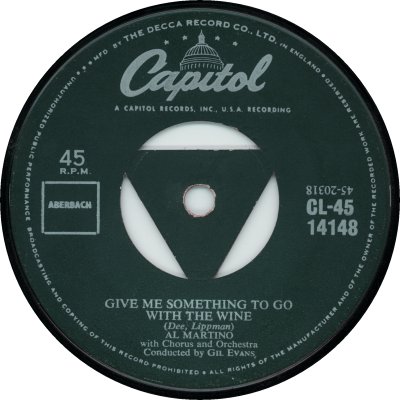
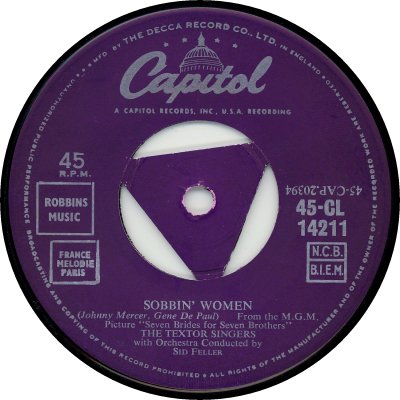
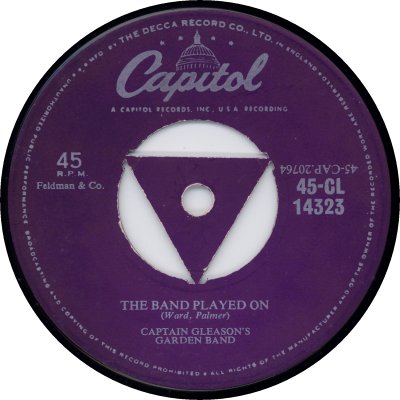
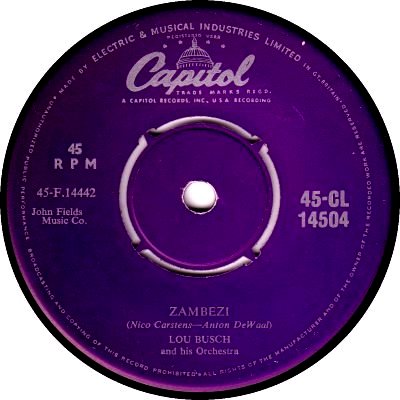
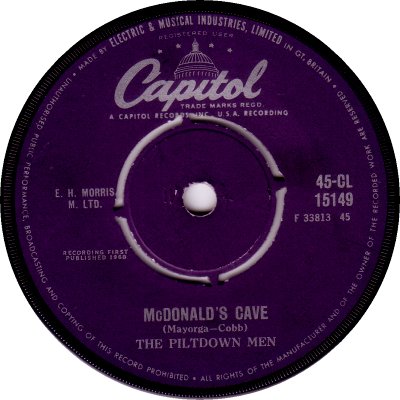
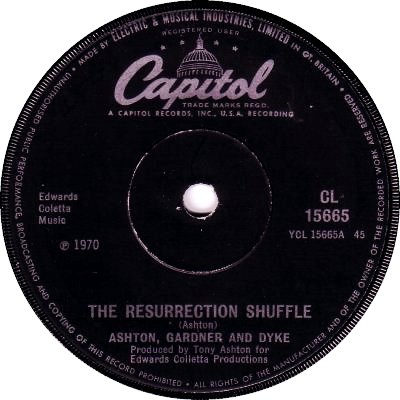
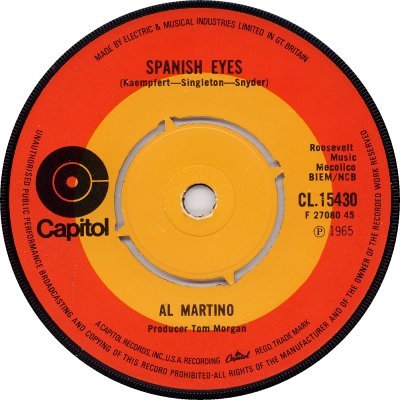
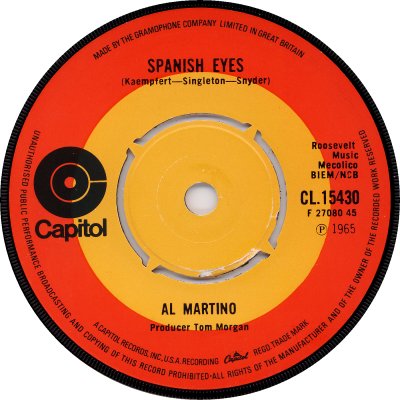
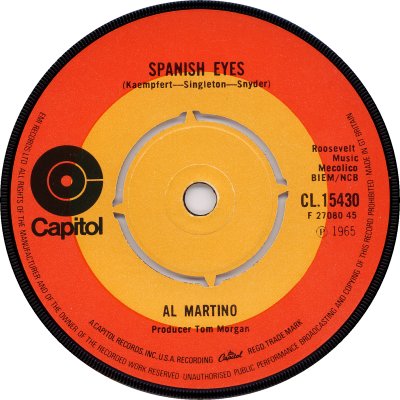
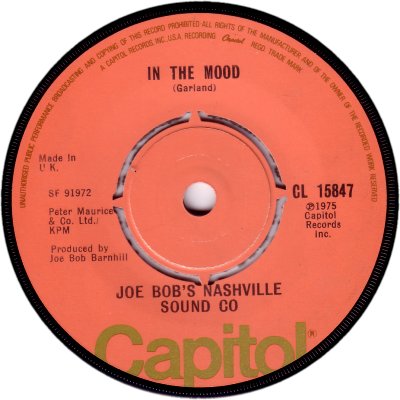
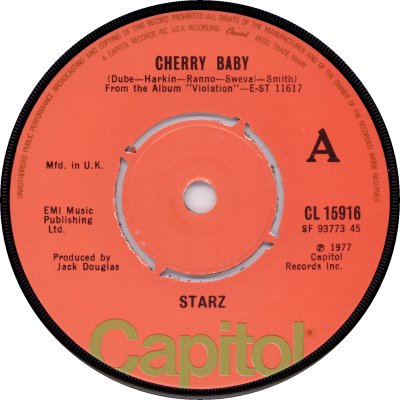
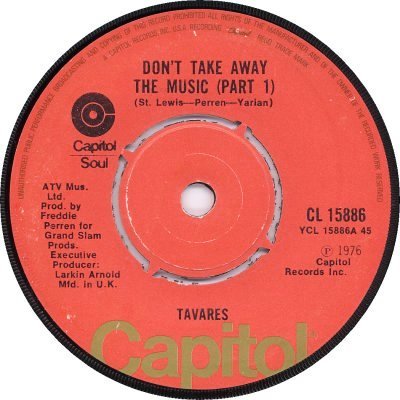
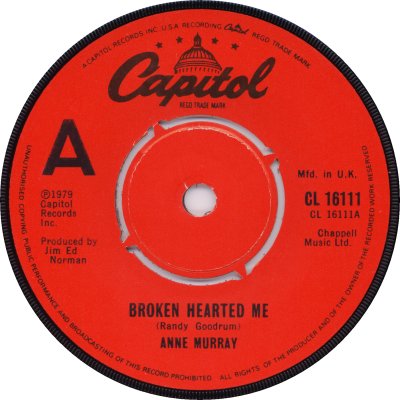
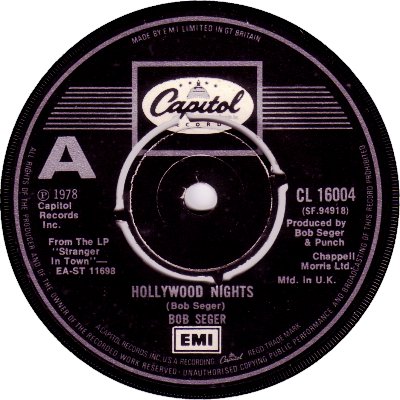
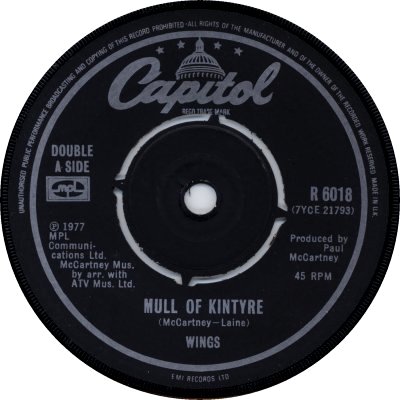
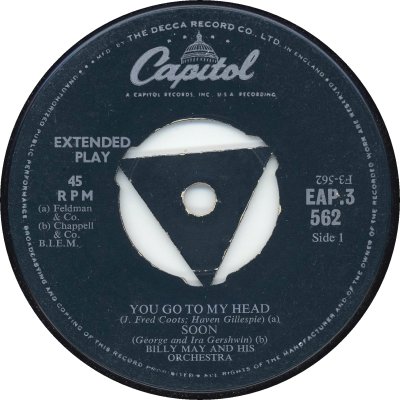
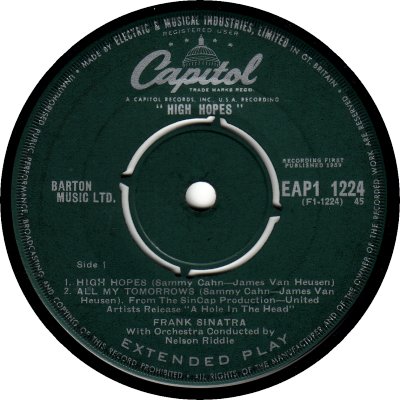
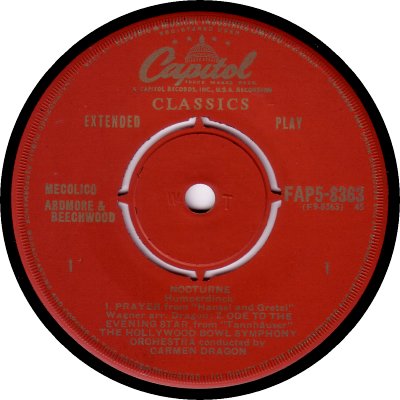
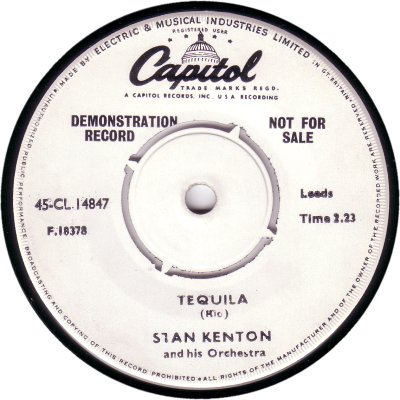
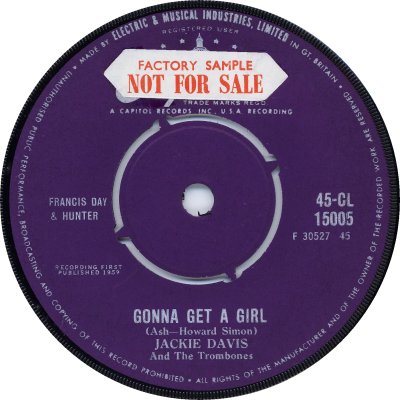
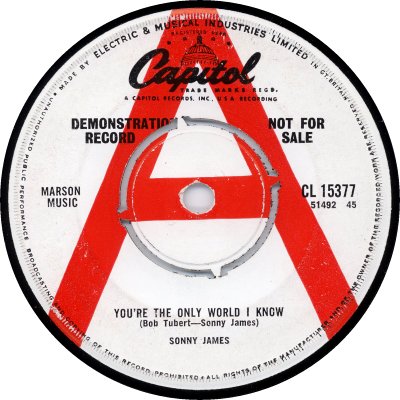
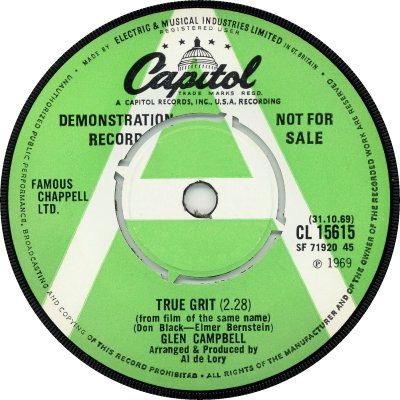
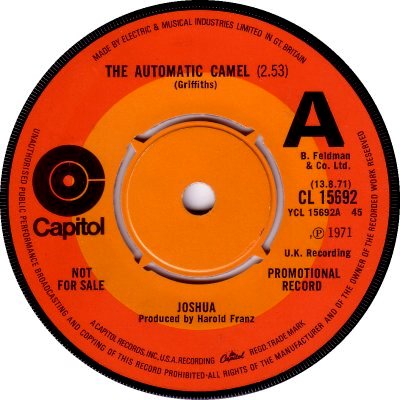

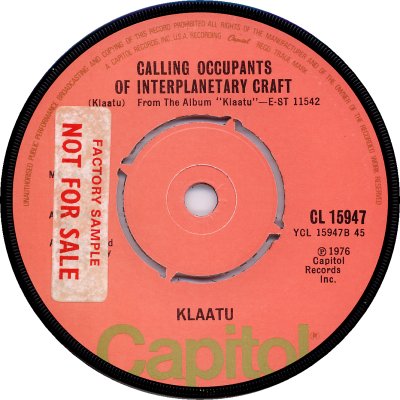
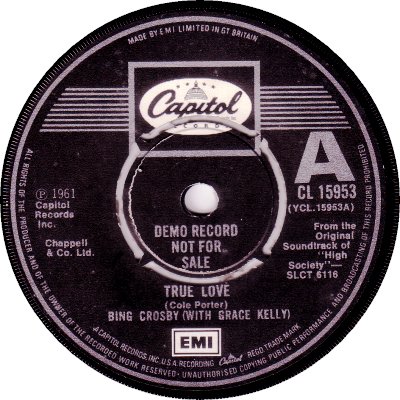
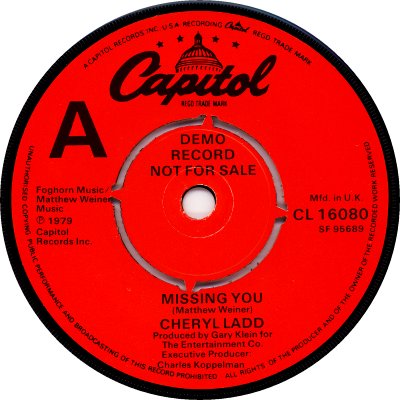
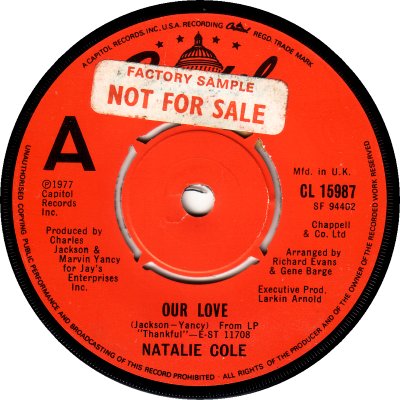
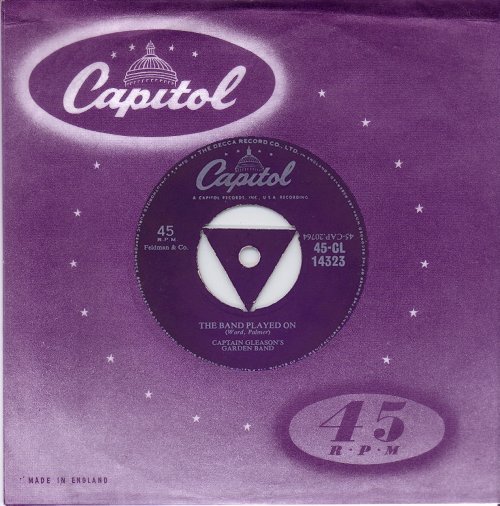

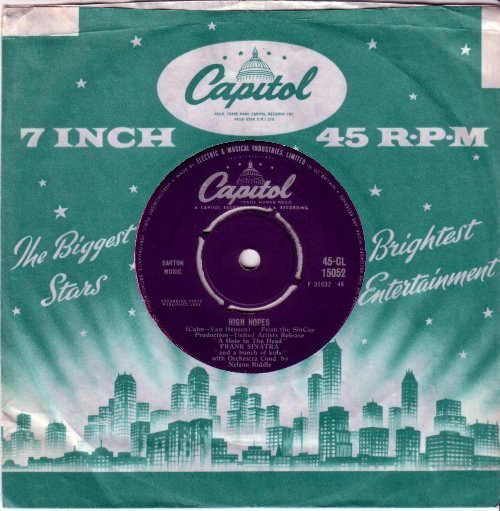
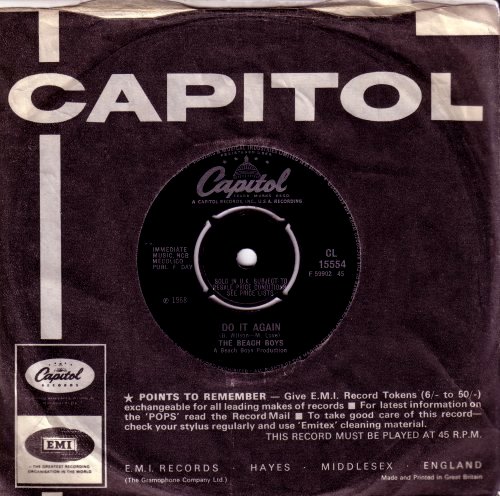
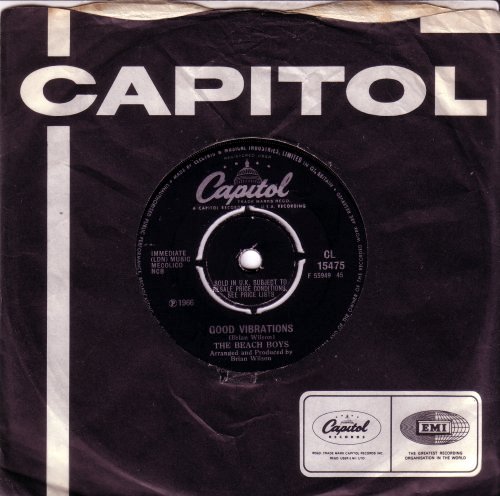
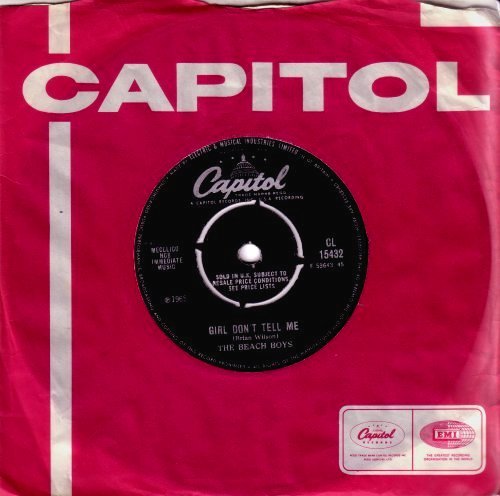
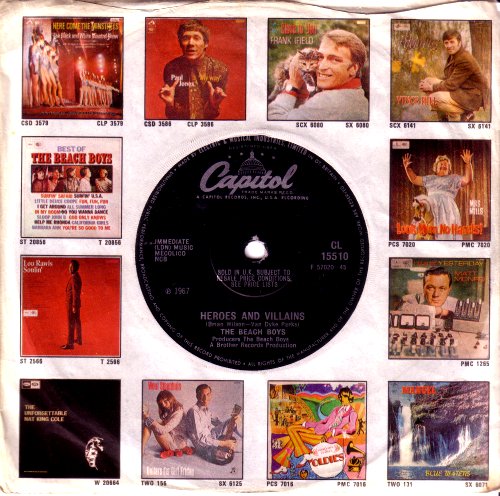
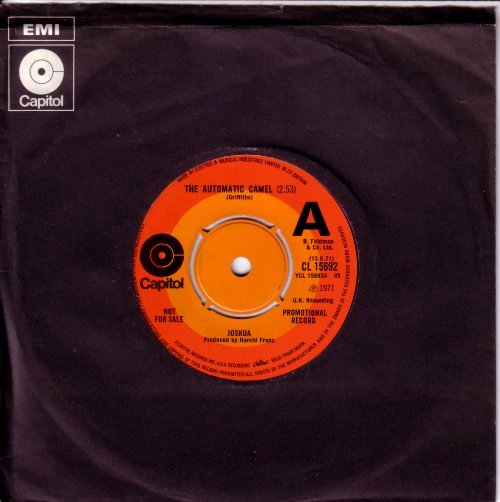
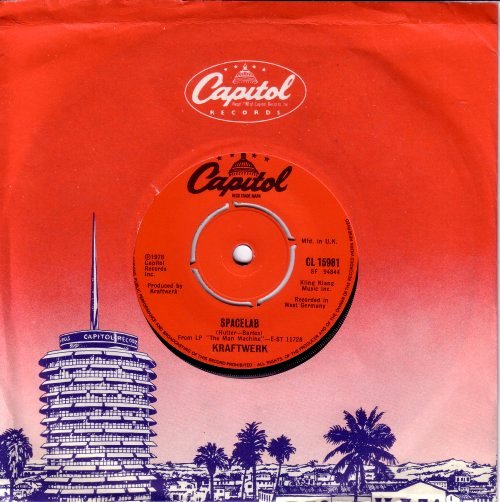
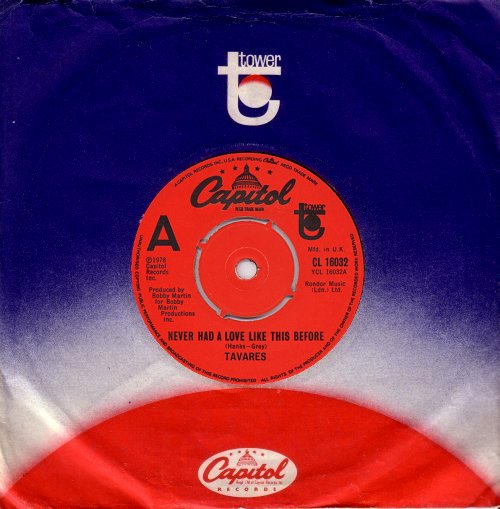
American; out of Hollywood, California. Capitol was founded in 1942 by songwriter Johnny Mercer, with the financial help of movie producer Buddy DeSylva and the business acumen of Glenn Wallichs. It was immediately successful, registering its first gold-selling single (Ella Mae Morse's 'Cow Cow Boogie') in that same year. By 1946 the company had sold 42,000,000 records, and it had such household names as Frank Sinatra, Nat King Cole, Peggy Lee, Les Paul and Les Baxter on its books. Its policy of concentrating on popular music paid off handsomely, and by the start of 1955, when EMI bought a controlling interest in the company, it was ranked third among the major labels in America ('Billboard', 16th September 1967). The same article stated that the acquisition gave EMI a major foothold in the States - up till that point its only presence in the country had been in the form of EMI (U.S.), which only marketed Classical repertoire. It also said that Capitol was "very much left to handle its own affairs" in common with EMI's other overseas companies. After the purchase EMI put money into the company, the fruits of which included the building of new studios in Hollywood - the Capitol Tower, which was featured on the singles' sleeve of the late '50s and late '70s. The investment paid off, and Capitol continued to flourish throughout the '60s and '70s, covering most areas of music with its diverse roster of artists from Anne Murray to Kraftwerk by way of the Beach Boys and Tavares. There were however changes on the ownership front.
In 1968 EMI merged Capitol Records Incorporated (in which, by that time, it owned 98% shares) with a publicly owned company called Audio Devices Inc; after the merger Audio Devices changed its name to Capitol Industries - EMI Inc. The move appears to have been regretted before too long. 'Music Week' of the 23rd of February 1974 reported that EMI, which at that point owned 71% of Capitol Industries - EMI, was aiming to buy the remaining shares and convert Capitol into a wholly-owned subsidiary. In May of that year EMI purchased over 90% of the public shares, leaving only 3% in other hands, but the final shares were not obtained until nearly five years later. It fell to 'MW' of the 3rd of March 1979 to reveal that EMI had obtained 100% equity interest in Capitol Industries - EMI, and had at last attained the goal of making it a wholly-owned subsidiary. Capitol thus became part of EMI Worldwide Music. There were a couple of labels associated with Capitol: EMI America in the late '70s, and Manhattan in the early '80s. Its success continued through the '80s and '90s, encompassing everything from Soul and Pop to Heavy Metal.
Capitol's singles featured a variety of label designs in Britain. Initially - from 1948 until the end of 1955 - Capitol was handled by Decca, which meant that when 45rpm records came on the scene (in 1954) they were tri-centred. In the beginning the catalogue numbers of 45s were in a CL-45-14000 series; the '45' distinguished them from their 78rpm equivalents. From November 1954 the '45' moved to the front; it stayed there during the move to EMI and only disappeared in March 1963, at which point presumably 78rpm records were no longer being made. The labels were green at first (1), but in or around October 1954 the colour was changed to purple (2) - some popular singles can be found with labels in either colour, as a result of re-pressings. The triangular centres became noticeably thinner in the spring of 1955 (3). At the time of EMI's purchase of a majority shareholding Capitol's deal with Decca still had some eighteen months to run ('Billboard', 22nd January 1955), but an agreement seems to have been reached to end the arrangement some six months early, for at the start of 1956 EMI took over manufacture, distribution and sales. The purple labels remained basically the same at the changeover, but the perforations changed and the reference to Decca at the top was replaced by one to Electric and Musical Industries (4). With slight variations (5) this design survived for several years; labels on EPs were coloured sea-green (15, 16), and there was also a gold-on-red Classical series (17). Around March 1965 the colour changed to black (6), and it stayed that way until around March 1970, when a two-tone label in a completely new design was introduced (7). A couple of changes in the perimeter text of this new design took place: the first was in November 1972, when the words 'Electric & Musical Industries' at the top were replaced by 'The Gramophone Company' (8). Then in August 1973 the legend 'Made by The Gramophone Company in Great Britain' at the top of the label was replaced by a credit to EMI Records at 10 o'clock and a reference to the country of manufacture at 2 o'clock (9). Al Martino's 'Spanish Eyes' was reissued in 1970 and remained on catalogue throughout the two-tone label era; as the scans show, it can be found in each of the three varieties. Similar changes of perimeter text took place on most of the other EMI group labels at or around the same time.
In March 1974 the two-tone label was replaced by a salmon-pink and green one (10), which was functional rather than decorative. A black letter 'A' appeared on issues from March 1977 onwards (11). 1975 saw the reappearance of black labels in more or less the old-style design, but they was used solely for singles by Paul McCartney and / or Wings (15). The original 'dome' design returned for all singles in April 1978, this time coloured black on bright red (13); according to 'MW' of the 8th of April the domed label had already made its return in the USA several months previously, and Capitol executives felt that it presented 'a stronger company image to the trade'. The red domed label saw out the remainder of the decade. A black label with horizontal silver stripes which was more often used for albums made the occasional appearance on 7" records. It was used almost exclusively on reissues from February 1977 into the autumn of 1978; the example shown (14), by Bob Seger, seems to have been the only contemporary single to have been given that label, and not all copies of that record had it. From the summer of 1975 to the autumn of 1976 Soul singles were identifed with a 'Capitol Soul' logo (12); I've given that series its own page (q.v.).
Demo labels followed the standard EMI pattern, starting off plain white (19), gaining a large red 'A' (21), changing colour to white-on-green (22) in June 1967, and finally, from April 1970, using issue labels overprinted (23, 24, 26, 27). Sometimes 'Factory Sample' stickers were used (20, 25, 28), which again seems to have been a common EMI practice. There were also a number of different company sleeves; the examples shown date from the Decca years (29), 1955 to mid 1958 (20), mid 1958 to mid 1963 (31), the mid '60s (32, 33), 1968-70 (35), the early 1970s (36) and the red-label era (37). Some singles from late 1978 and 1979 had a Tower logo on them; the Tower / Capitol sleeve (38) doesn't seem to have been exclusive to them. The salmon-pink labelled singles came in plain white sleeves. In or around 1967, Capitol singles appeared in a multicoloured sleeve (34) which seems to have been common to all the EMI labels and which featured pictures of current EMI albums. I have put together a list of Capitol singles that were issued in the 1970s; it's quite long, so I have given it its own page, here.
(www://en.wikipedia.org)


Copyright 2006 Robert Lyons.

